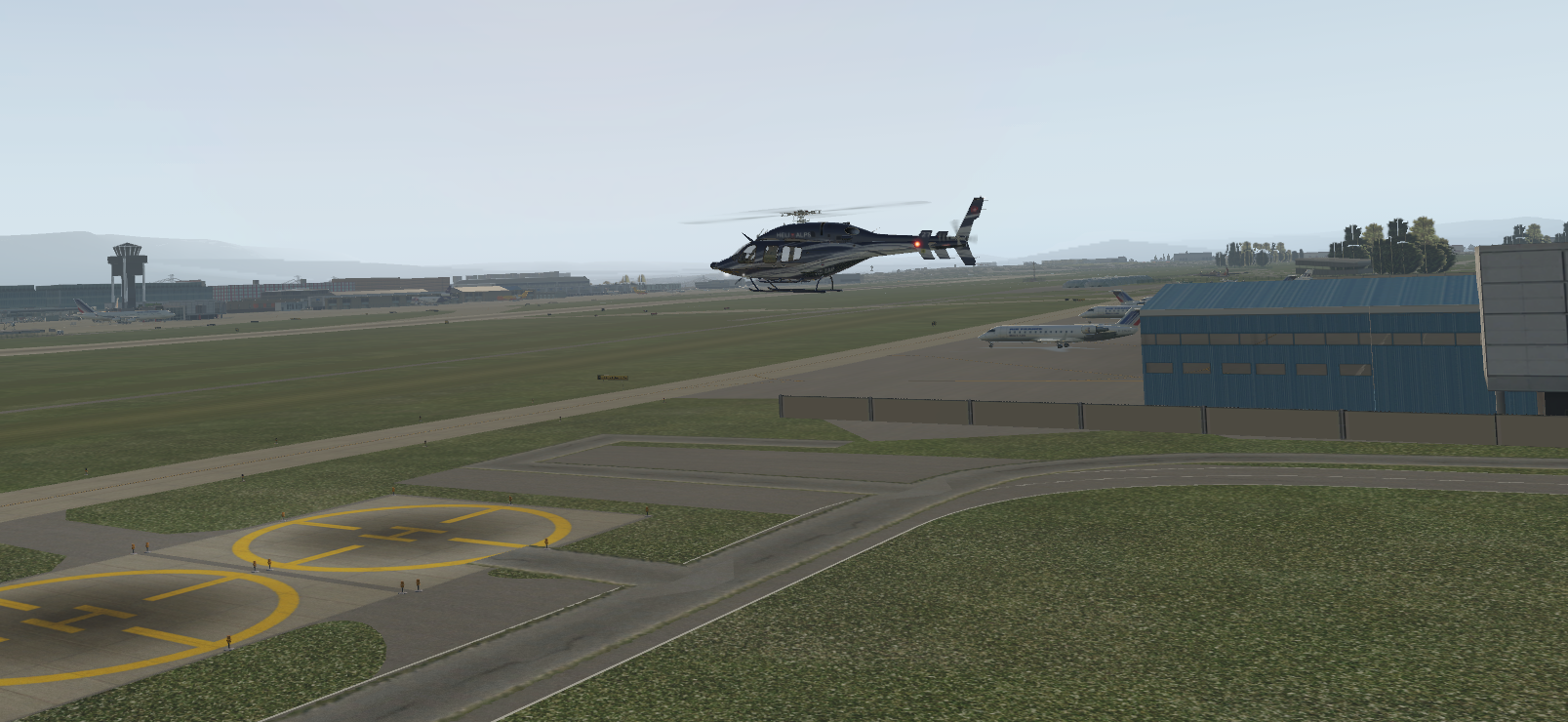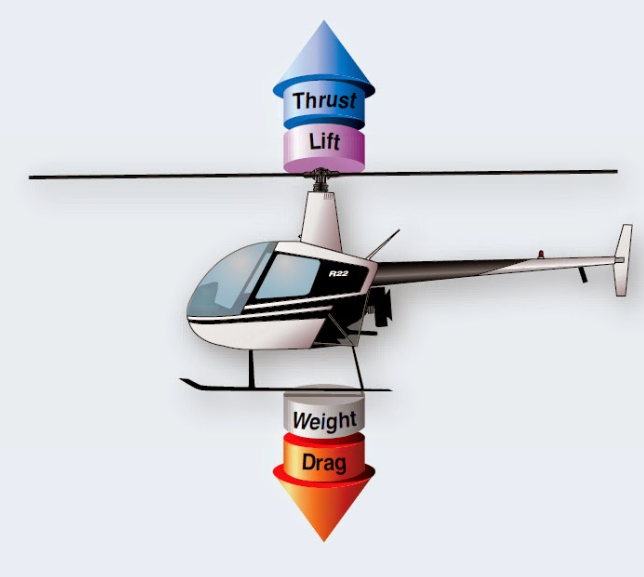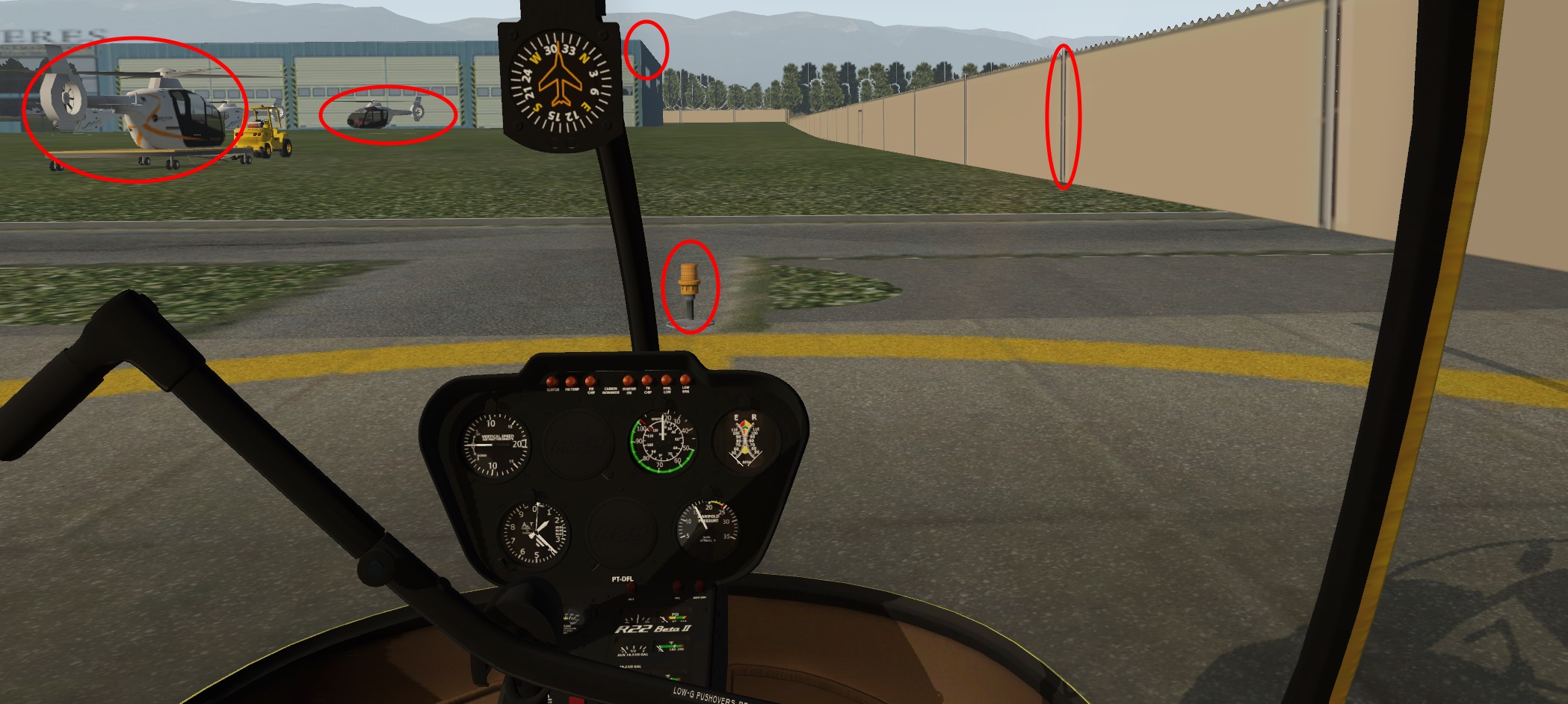¶ INTRODUCTION
A helicopter hovers when the following elements remain constant:
- Position over the surface
- Height above the surface
- Rotor rpm
- Heading

Hovering is a manoeuvre in which the helicopter is maintained in nearly motionless flight over a reference point at a constant altitude and on a constant heading. The altitude is usually between 3-10ft AGL, otherwise it's not a hover.
¶ Theory
Many takeoffs and landings are performed via the hover, which identifies it as a manoeuvre normally carried out close to a surface.
To perform a hover, the pilot needs to use all his flight controls (as usual during flight manoeuvres) like this:
- The collective to control the altitude
- The cyclic to control the position (by controlling forward, backward, right and left movement or travel)
- The pedals to control the heading
- The Throttle to maintain a constant rpm
Remember that during a hover, the position over the surface, the heading and the altitude are constant. To maintain the helicopter in a stabilized hover, make small, smooth and coordinated corrections with the flight controls. This is key. As the desired effect occurs, remove the correction in order to stop the helicopter's movement. In other words: an adjustment in any one control requires an adjustment of the other two, creating a cycle of constant correction.
In term of aerodynamics, all forces (lift, thrust, drag, and weight) are in balance: they are equal and opposite. Therefore, lift and weight are equal, resulting in the helicopter remaining at a stationary hover.

¶ In practice
On the ground, it is important to take some visual points to look for small changes in the helicopter's attitude. When the pilot notes these changes, he will make the necessary control inputs before the helicopter starts to move from a point or an other. The picture below shows some visual points:

- Pull up the collective pitch slowly: the helicopter will lift
- By pulling up the collective, the nose will begin to turn right. Use the left pedals to correct it. Remember, the helicopter has to have a constant heading
- The helicopter will also make a left transition: to correct it, move the cyclic right according to the reaction with small and smooth input on the cyclic
All corrections above have to be done simultaneously, by using all flight controls. These corrections have to be coordinated. If the pilot uses the left pedal to correct the heading but does not use the cyclic to stabilize the helicopter, the positition over the surface is lost.
The hover is one of the most difficult manoeuvres which a pilot has to practice. At the beginning, the best thing to do is to practice without wind.
- None
- VID 514786 - Creation
- VID 496402 - Wiki.js integration.